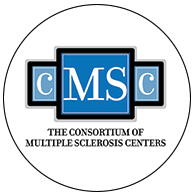Mouse experiments with compounds having opposite actions on two receptors for TNF (tumor necrosis factor) — a key factor in neurodegeneration — explains why earlier trials of TNF blockers in multiple sclerosis (MS) went wrong, and paves the way for more selective drugs targeting the system to stop MS neurodegeneration.
The study, “Essential protective role of tumor necrosis factor receptor 2 in neurodegeneration,” published in the journal Proceeding of the National Academy of Sciences (PNAS), also has implications for a wide range of other neurodegenerative conditions.
While drugs blocking TNF have been a success in several other autoimmune inflammatory diseases, a clinical trial using TNF blockers in MS ended in a disaster. Patients got worse, and today, both patients and physicians know that TNF blockers and MS don’t mix.
Investigations into what went wrong revealed that TNF signaling was not as simple as researchers had thought. TNF turned out to have two receptors, termed TNFR1 and TNFR2. If TNFR1 gets activated, cell death is triggered. TNFR2, on the other hand, works to protect cells from dying.
To complicate things even further, there are also two types of TNF: a soluble form existing outside cells, which only signals through TNFR1, and a type that sits in the cell membrane, able to activate both receptors (TNFR1 and TNFR2).
Ulrich Eisel, the senior author of the new study and a professor at the University of Groningen in the Netherlands, was part of the team that discovered the intricacies of TNF signaling. Now, Eisel and his research team tested compounds selectively acting on either TNFR1 or TNFR2 in mouse models of MS.
Since the new compounds have been developed to recognize human TNF receptors, researchers first engineered mice to hold the human receptors. After triggering neurodegeneration in the animals, the team treated them with a drug blocking TNFR1 — the receptor triggering cell death — and another compound activating the protective TNFR2.
The approach prevented cells from dying, and also hindered the development of memory problems seen in the control mice. In contrast, when blocking both receptors, as the old clinical trial did, neurons continued to die. The study, therefore, suggests that the protective effect of TNFR2 is necessary to avoid neurodegeneration.
“We are now starting more trials in mouse models of MS,” Eisel said in a news release, adding that the team is now collaborating with ZonMw, the Netherlands Organization for Health Research and Development, to develop nanoparticles that would enable more efficient drug delivery into the brain.










